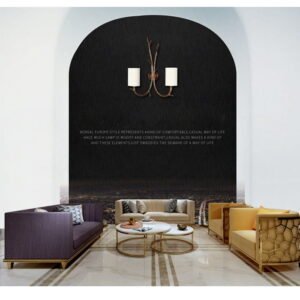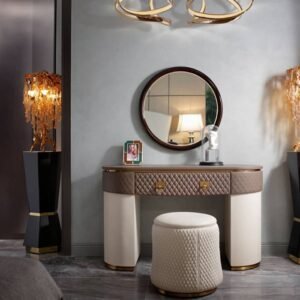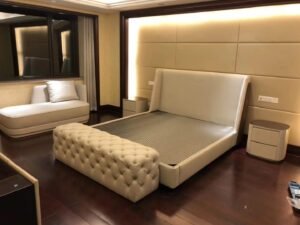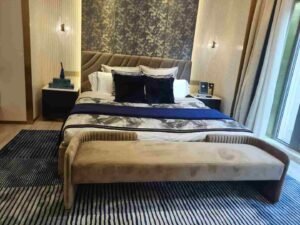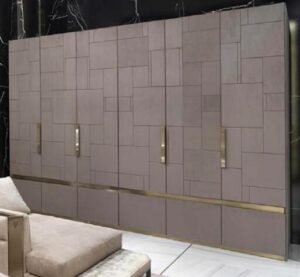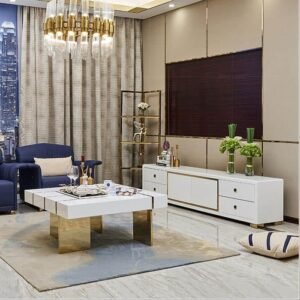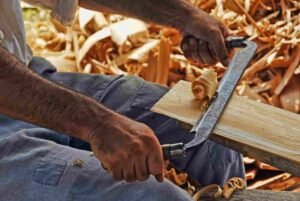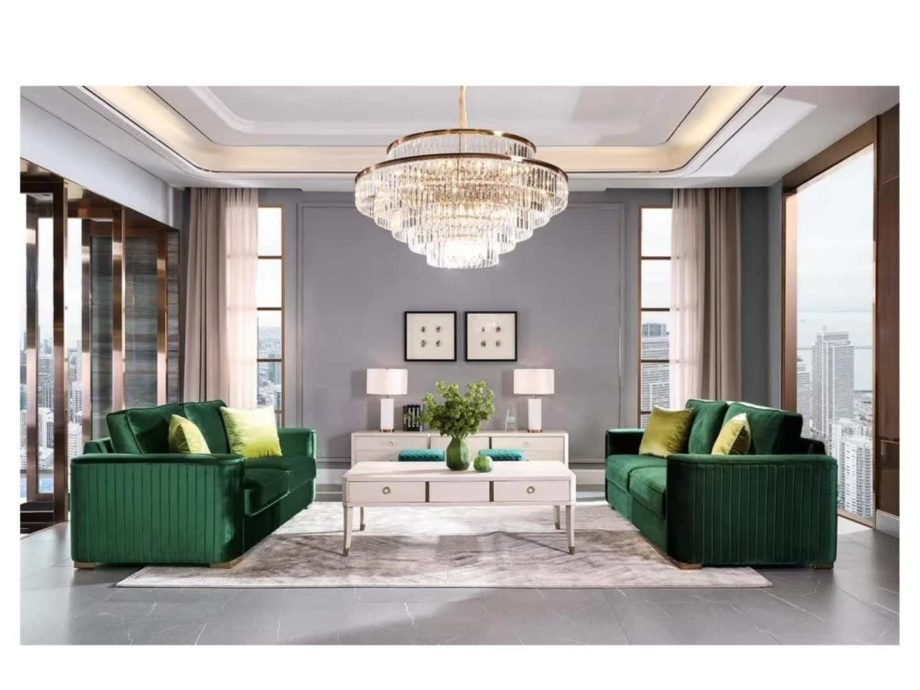A few consumers have defended their rights because they have bought veneered furniture posing as solid wood or mahogany furniture. Some unscrupulous traders in the Vietnamese mahogany lumber market have learned to use the veneer technology on the mahogany slab so that many Chinese people who buy the original would have been cheated.
Red sourwood veneer slabs (originally full-encircling veneer) in the Vietnamese market
The surface and the bottom are carefully pasted and blessed with a thin slab of real wood, both front and back, but what is wrapped around it is not mahogany but mixed or other wood, some even cement tables.
These sellers will also make some disguises on these woods, and mostly take the buyers to a dark warehouse to inspect them. Using various methods to make the inspection time is very rushed so that the buyers can not seriously check.

For the veneer of raw redwood timber, as long as the heart to beware, the rugged look will always see some clues, and the log market can also move the ax test color, pay attention to check the words not to be tricked.
Therefore, they are often cheated because the unscrupulous merchants fall into the “Bureau” not because of inspection technology on the problem.
In this, we focus on furniture veneer. The nursing home furniture veneer is a modern wood decoration process; for many of the market veneer furniture chaos, a summary of a few tips on identifying the veneer furniture method.
Not to be confused with veneer.
In the General Technical Conditions for Mahogany nursing home furniture, there is an explanation of the term. “Mahogany cladding furniture: the use of high-quality natural solid-sawn timber as the base material, the appearance of cladding dark expensive hardwood sheet (thickness of not less than 6mm) processing made of furniture.” Particularly noteworthy is the addition of this note at the end. “Note: hardwood cladding process from the Qing dynasty, different from today’s micro-thin wood cladding (veneer) surface process.”
The general technical conditions of mahogany furniture are the national standard of the mahogany industry. So, for “mahogany clad nursing home furniture,” this definition can provide us with what information?
Mid-Qing dynasty red sandalwood and copper-wrapped corner kangding table
From the explanation’s content, it can be concluded that “mahogany-clad furniture” is what we call “veneered” furniture, but they are two different ways of getting it. And the last note, “thin wood cladding (veneer) process,” refers to the often confused with the veneer furniture package, the two are two completely can not be equated with the concept.
The division between cladding and veneering can also be found in the above explanation. The outer surface is covered with a dark, expensive hardwood sheet, the thickness of which is not less than 6mm, which meets this condition, that is, it is inlaid furniture, not veneered nursing home furniture.
Simultaneously, it should not be overlooked that it is a legitimate business practice only when the merchant states “XXX clad furniture” on the quality warranty card. If the veneered furniture is sold as “full XXX nursing home furniture” or “XXX furniture,” it constitutes commercial fraud and is subject to legal liability.

So what is veneered furniture?
The production method of veneer furniture is more precious, beautiful wood soaked in hot water after softening, with large woodworking machinery will be rotary cut or planed into about 1 mm thick, thin board, the so-called “skin,” and then according to the wood grain to spell into a variety of patterns, paste on the surface of nursing home furniture, commonly known as “paste the skin.”

Early Qing Dynasty Zitan clad screen base
In contrast, it can be seen that there are many differences between inlaid furniture and veneered nursing home furniture. The parquet process has been around since the Qing dynasty, and its birth was inevitable, and there was no lack of advantages.
First of all, parquet furniture could save a lot of precious wood, especially in the late Qing dynasty, the decline of power, the import of valuable timber has been unable to in the ordinary wood outside of the coating of valuable timber to maintain the ruler’s “face” is a proven method of speaking. The late Qing dynasty had several heirloom nursing home furniture pieces covered with inlays, and here’s why.
Secondly, it was a reliable and stable piece of furniture. In the northern dry climate conditions, the precious hardwood material is easy to crack and deformation. Tests have shown that using soft annum and pine as the carcasses and then covering the exterior with lovely hardwoods can produce reliable and durable furniture, as long as the environment is not excessively humid.
Again, portable. As we all know, the density of hardwood, heavy, not conducive to handling, but with the nanmu, elm, and other light softwood to do cartilage, and then covered Stanwood, huanghuali, and other valuable woods, not only light and easy to carry, but also luxurious. According to the Qing Palace archives, the royal carriage and other transportation apparatus commonly used this method.
The parquet technique in the late Qing dynasty is particularly common in the furniture production, from the Qing dynasty engineering literature repeatedly recorded and a large number of cases used in the court, parquet is not an inferior tampering process. Still, it is a model home furniture auction art development to the inevitable phenomenon of the Qing dynasty.
First, in the late Qing dynasty, the domestic quality of rosewood timber quantity sharply reduced. Even after the middle of the Qing dynasty with huanghuali do with inlay furniture also become extremely rare.
Second, the country’s power is declining, unable to import many zitan kinds of wood and other expensive wood; in this case, package inlay is undoubtedly an effective way to save wood.
Third, China and the West cultural exchange, by the ancient Western architecture “soil tire paste stone” decorative tradition and decorative furniture, cover the influence of technique, the Qing court decoration style, and furniture have a lot of changes.
The bonding material used in the Qing dynasty’s parquet technique was “swim bladder” (fish miscanthus glue or pig fat glue), and some of the parquet furniture handed down from the Qing dynasty is still very strong and fine, with some interfaces as subtle as a hair, and hard to detect. The more decorative features of the package inlay can not be ignored; some of the furniture of the Qing dynasty on the “grid corner paste,” “ride sewing paste,” “committee corner paste,” hanging lacquer, and copper package feet belong to the process of package inlay! The difference between veneered furniture and modern “veneered furniture” can be summarized as follows.
The difference between clad furniture and modern “veneered furniture” can thus be summarized as follows.
A. The art of veneering is an art of beauty that began in the Qing Dynasty. The “veneering” is a modern means of counterfeiting furniture, which is often packaged as “full XXX furniture” for sale and is illegal in a commercial context. The nature of the two is entirely different, so they are not comparable.
Traditional paneled furniture is glued with swim glue, while veneered farmers home furniture is often glued with industrial adhesive.
The first thing you need to do is get rid of the wood in your home staging furniture rental, and if you do that, you’re guilty of veneering.
The first thing you need to know about veneered furniture is that it’s not just a veneer.
Two years ago, a news report on a consumer surnamed Chen bought a set of Rosewood furniture at a high price, after six months of use, found that the cabinet door has a crack. The edge of the damage is raised after the test was learned; this set of farmers home furniture and individual parts and skin of a layer of about 2 mm thick Rosewood material, inside the package is only rosewood. After the consumer surnamed Chen to request a refund to no avail, the manufacturer will take the case to court.
Like this phenomenon in the mixed furniture, the market is not an isolated case; if the consumer surnamed Chen has a specific recognition of veneer furniture knowledge, a similar situation is likely to avoid the occurrence.

The most important thing to identify veneer furniture is to understand the characteristics of veneer furniture. The most important thing is to understand veneer furniture features, and here are five ways to identify veneer furniture for consumers to learn from.
The first move: look at the color and texture.
Standard mahogany furniture parts of the positive and negative grain and color should be a little different. As we all know, due to the same piece of thick board to be cut according to the same thickness or different thickness specifications, each part of the board will have other positive and negative grain. String cutting and radial cutting to get the pattern effect is not the same, rarely or impossible for the two sides of the grain and color precisely the same. If the grain and color on the front and back of a piece of furniture are identical, it should be carefully screened.
Some large furniture is the main object of veneering. In general, a bed or an extended case of large side thickness is more than 5cm. Before processing into finished material, there is usually a certain amount of processing margin, so the texture and color’s positive and negative side should be different.
But if the difference is so significant that even the basic features are unrelated, it is also doubtful. When you buy farmers home furniture, you should focus on the following parts: large cabinet side panels, the heart board’s face, rifling board, drawer board, and other thin material parts.

The second trick: smell the smell
To veneer furniture, glue is inevitably used. As mentioned above, the traditional way to wrap furniture is to use a swim bladder. The reason for the use of a swim bladder is that the table is blistered and wrinkled when it is wrapped, so it is easy to get the air out of it by using a bladder, and it is very flat when ironed, which is not the case with many chemical types of glue.
The best way to identify swim bladders is to rub the nursing home furniture’s surface with your hand, which will give it a sour smell when it gets hot. If a chemical glue was used instead of a swim bladder, the smell of the chemical could be detected by this method.
For varnished furniture, this method no longer works but can be tested on the reverse side of the table or inside, because the vast majority of these places farmers home furniture is not varnished.
The third trick: observe the component transfer joints and mortise and tenon joints.
Due to the veneering process’s limitations, it was not possible to veneer the mortise and tenon joints of the furniture. For example, in the Ming-style Luohan bed, the joints between the three sides of the bed could be disassembled, and if the color of the wood inside and outside of the joints were inconsistent, the nursing home furniture must be veneered.
Also, in the furniture parts of the turning place, the naked eye can also observe the seams. If the overall flow of the pattern is natural, there is no sudden break, and it is a block of wood even do. If the design is broken, it is either spliced or veneered with wood.
Worn veneer
The fourth move: listen to the voice.
Mahogany veneer furniture, covering which are generally not expensive wood, the wood density is lower than the veneer part of the surface timber due to different thickness; in the knocking veneer furniture and standard furniture, the sound is also different.
This is a very important part of a company’s business, as it is a very important part of a company’s reputation. The sound of identifying veneer furniture is a trick that requires long-term experience and practice and should be practiced repeatedly.
The fifth trick: hand feeling
For small and medium-sized furniture, the weight of the furniture can be carried hand-held to sense the weight of the furniture, too light or too heavy is questionable. There have been cases of counterfeiters placing heavy objects such as iron in the four legs of the bed to increase the overall weight of the furniture; in this case, you can carry a piece of iron-absorbing stone with you and test it on the heavy part of the material.
For large furniture, feel the change in surface temperature by hand, which is also a way to identify the density of the wood. Higher density wood, in the touch of the moment, feels cooler, while the density of the wood feel the temperature of the hand is relatively high.

In addition to the above five moves, but also to understand, veneer furniture can not hot wax because hot wax will make the “skin” blistering. So veneer nursing home furniture can only be waxed or rubbed with a thin layer of walnut oil, or directly varnished.
In the example cited above, the consumer surnamed Chen discovered the veneer problem through the opportunity of furniture cracking. Cracking is common in northern regions of the world, and veneered furniture is more likely to be exposed by cracking.
If the veneer problem is discovered after a certain period of time, it is important to know how to protect your rights. The key to dealing with this problem is to follow the latest “general technical conditions of annatto furniture” to draw up a contract, especially the product materials must be written specifications, whether it is covered nursing home furniture should be indicated.
In fact, this is not only the consumer’s right to know respect; for manufacturers is a kind of integrity of business ethics. In the long run, counterfeiting is of no benefit to anyone, and any unethical business practice will pay for itself one day!






